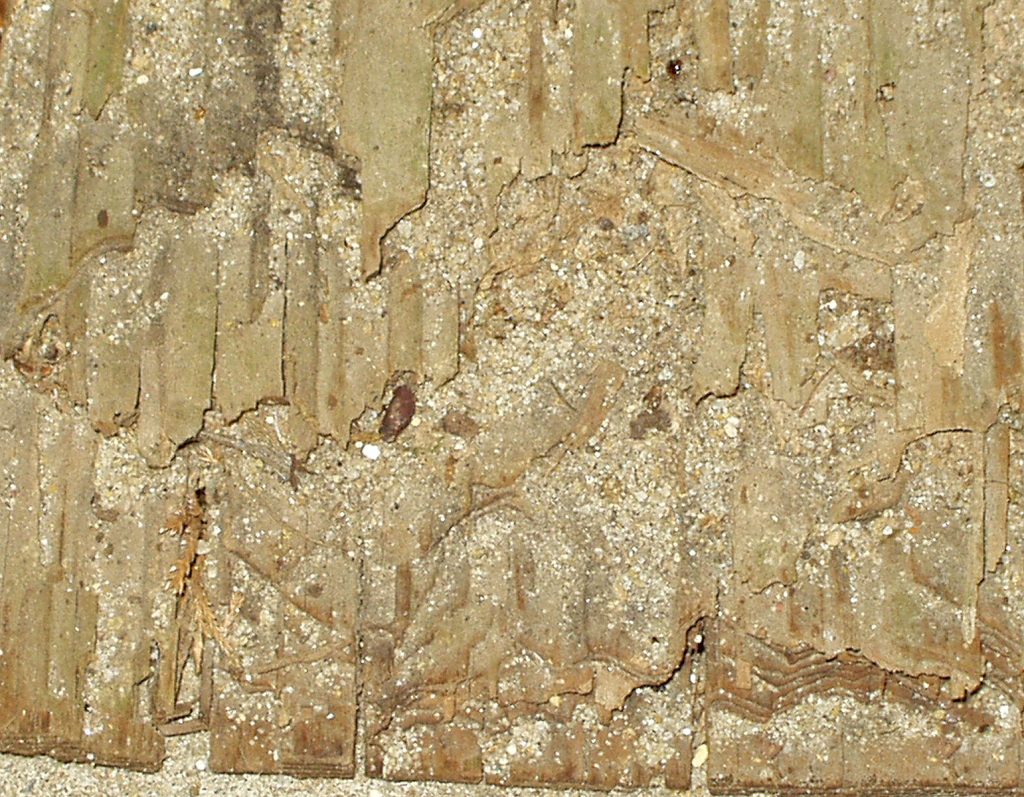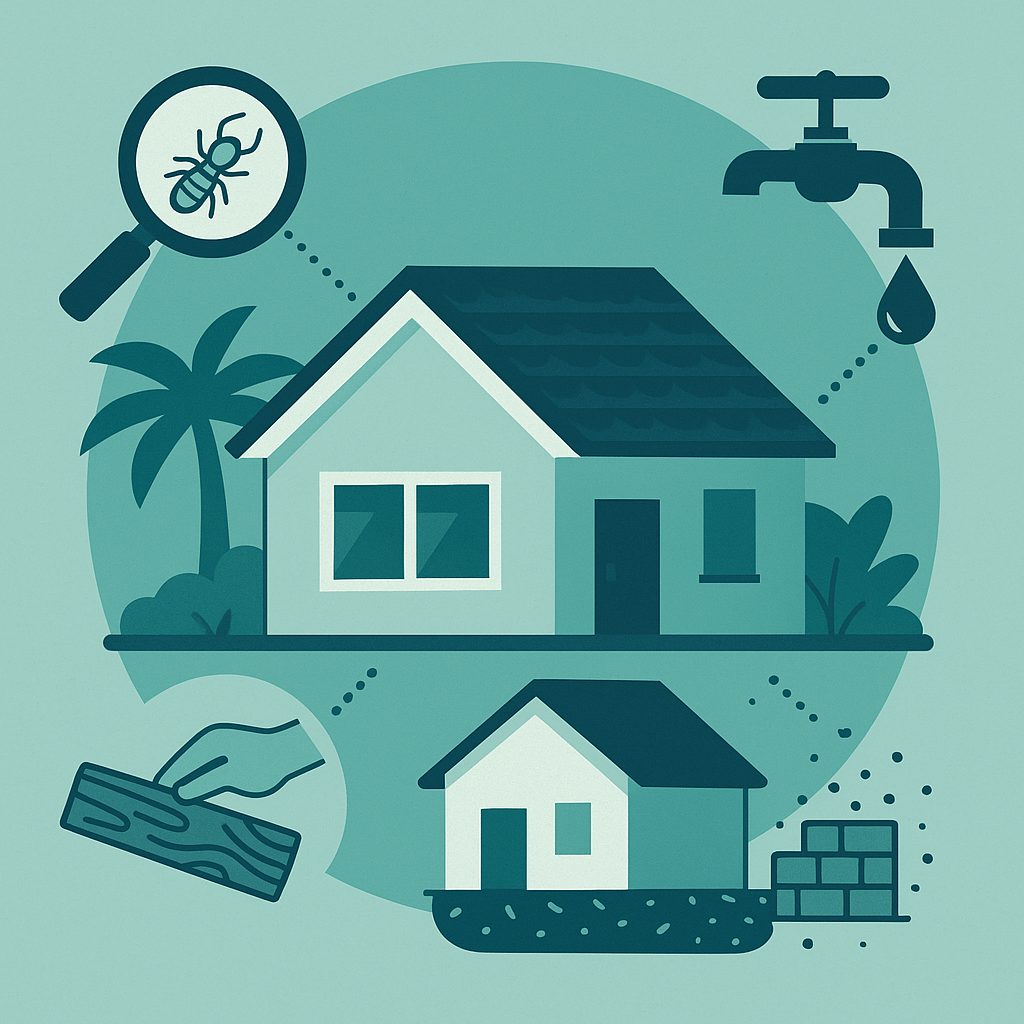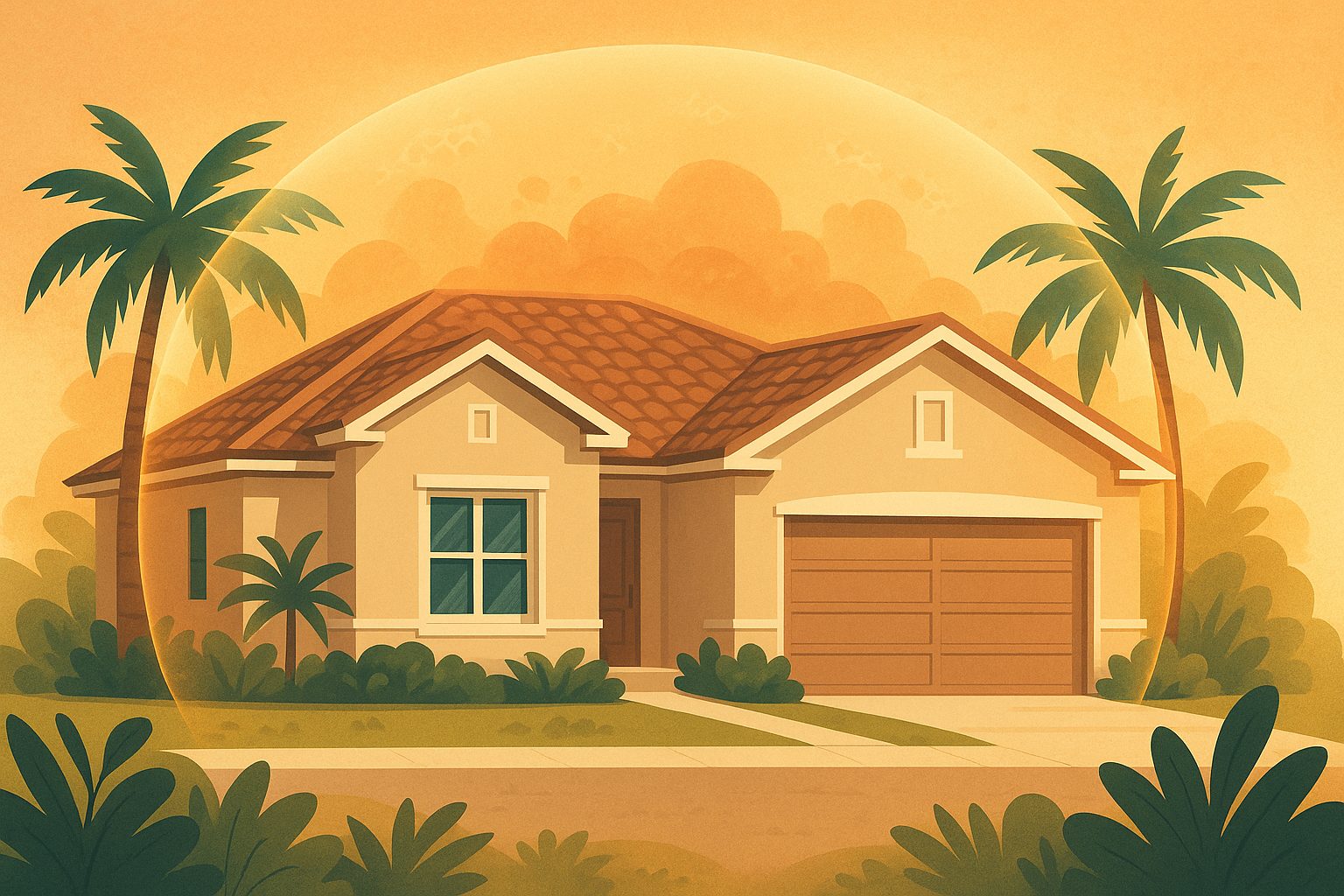Pinecrest’s tropical charm comes with a hidden threat. In our leafy village nestled between Biscayne Bay and U.S. 1, wood‑framed homes are surrounded by swaying palms and lush landscaping. But those warm, humid evenings that make outdoor living so pleasant also happen to be prime conditions for termites. One silent infestation can quickly turn a dream home into a costly nightmare. In South Florida, swarmers often emerge after a rainstorm and swarm for less than an hour, yet the damage they leave behind can linger for years. As a homeowner in Pinecrest, understanding termite behavior and prevention is essential to safeguarding your investment.
Know Your Enemy: Subterranean vs. Drywood Termites
Two types of termites are common in Miami‑Dade County: subterranean and drywood. Subterranean termites live underground. They build mud tubes to reach wood above the soil and require constant moisture. In Florida, they swarm on warm, humid evenings, often after gentle spring rain. Their colonies can number in the millions, making them aggressive and destructive.
Drywood termites, on the other hand, nest inside the wood they consume. Unlike subterranean species, they do not need contact with soil; instead, they live within dry wood, attics, and furniture. Drywood termites push out hard, sand‑like pellets (called frass) through tiny holes, which is often the first visible sign of an infestation. Because they live entirely inside wood, detection is tricky and treatment requires different strategies.
Pinecrest’s combination of historic homes, wood fencing and abundant landscaping creates a habitat where both species can thrive. That’s why homeowners need to understand the signs of each and know how to respond.
Why Pinecrest Homes Are Vulnerable
- Warm, humid climate – Termites swarm when temperatures are warm and humidity is high. Our average temperatures rarely dip below the mid‑75°F, and afternoon rain showers are common. This means termite swarming season can last longer here than in other parts of the country.
- Abundant moisture sources – Leaky irrigation systems, clogged gutters and poor crawlspace ventilation create damp conditions. Subterranean termites are attracted to moisture, while even drywood termites prefer wood with at least some humidity.
- Wood‑to‑ground contact – Wooden decks, fences and landscape timbers that touch soil make it easy for subterranean termites to enter your home. Pinecrest’s lush gardens often use mulch and wood borders that inadvertently provide termite highways.
- Mature trees and fallen debris – Storms and hurricanes leave behind fallen branches that are not always promptly removed. Decaying wood and piles of firewood near the house can harbor colonies.
- Large pest populations in Miami‑Dade – The region is a hotspot for invasive termite species. Because of the dense population and constant construction, colonies can spread quickly from one property to the next.
Understanding these risk factors helps homeowners create a defensive plan tailored to our environment.
Signs of a Termite Infestation
Early detection is vital. Because termites work from the inside out, damage often isn’t obvious until the infestation is advanced. Look for these indicators:
ying swarmers** – Winged termites emerging from baseboards, door frames or tree stumps. Swarms in Pinecrest usually occur on warm, humid days after rainfall. You may find discarded wings near windowsills.
- Mud tubes – Subterranean termites build pencil‑thick tubes along foundations, walls or crawlspaces. These shelters protect them from predators and dehydration.
- Hollow‑sounding wood – Tap exposed wood; if it sounds hollow or papery, termites may have eaten the inner layers.
- Tiny holes and frass – Drywood termites push out pellets resembling sand or coffee grounds through small exit holes. Check window sills, attic framing and wood furniture.
- Bubbling or blistering paint – Moisture from termite activity can cause paint to bubble or distort.
If you notice one or more of these signs, call a licensed pest professional promptly. Termite damage accelerates quickly in our climate.

Prevention: Protect Your Home Before Termites Attack
While no prevention plan is foolproof, there are many steps you can take to make your home less appealing to termites:
- Eliminate wood‑to‑soil contact – Keep fence posts, lattice and deck supports off the ground using metal brackets or concrete bases. Replace wooden landscape borders with stone or concrete.
- Manage moisture – Fix leaky faucets, AC condensate lines and irrigation systems. Ensure gutters and downspouts direct water away from the foundation. Vent crawlspaces and install a vapor barrier when possible.
- Remove fallen debris and yard waste – Regularly remove fallen fruit, dead branches and decaying stumps. Store firewood and lumber at least 20 feet from the house and off the ground.
- Seal gaps and openings – Inspect your home’s exterior for cracks around utility pipes, cable lines and foundation vents. Seal with caulk or foam to prevent swarmers from entering.
- Use termite‑resistant materials – When constructing or renovating, choose pressure‑treated lumber, metal flashing and termite‑resistant mulch (such as rubber or gravel).
- Install bait stations – Professional termite bait stations strategically placed around your property can detect and eliminate subterranean colonies before they reach your home. These systems require monitoring by a licensed technician.
- Schedule regular inspections – Annual or bi‑annual termite inspections are essential in Pinecrest. Professionals can spot early signs and recommend preventive treatments. Many homeowners make it part of their spring home maintenance routine.
Taking these steps will not only deter termites but can also reduce the risk of other pests
such as ants and cockroaches. Prevention is always less expensive than repair.
Treatment Options: What Happens If You Already Have Termites?
If an inspection confirms termite activity, don’t panic. Several effective treatment options are available, and a professional can tailor the solution to your home and budget:
e. Termites feed on the bait and carry the active ingredient back to the colony, eventually eliminating it. Bait systems require regular monitoring but involve less chemical use than trenching.
- Foam and localized treatments – For drywood infestations confined to a small area, technicians may inject foam or dust into wall voids or infested wood. These targeted treatments can be effective when the colony is limited.
- Tent fumigation – Severe drywood infestations that span multiple rooms or the entire structure may require tenting. The structure is enclosed and a fumigant gas penetrates all wood, killing termites throughout. While highly effective, fumigation requires the homeowner to vacate for several days and may necessitate special permits.
- No‑tent treatments – Some modern products allow for whole‑house drywood treatments without tenting. These involve injecting liquid or foam into wall cavities and attics and can be a convenient alternative for minor infestations.
The right solution depends on the termite species, the infestation’s extent and the structure’s design. A trusted professional will identify the species and discuss options that minimize disruption while effectively eliminating termites.
Why Choose Dade Pest Solutions for Pinecrest Termite Control
Dade Pest Solutions is a locally owned, family‑run pest control company serving Pinecrest and greater Miami‑Dade. Our technicians live and work in the communities we serve, so we understand the unique challenges of South Florida pests. We offer:
- Licensed and experienced technicians trained in the latest termite identification, monitoring and treatment techniques.
- Customized plans tailored to your home’s construction, termite species and your comfort level with different treatment methods. We prioritize eco‑friendly and low‑impact solutions when possible.
- Preventive maintenance programs to stop infestations before they start. Regular inspections and bait system monitoring keep your home protected year‑round.
- Transparent pricing and communication – You’ll know exactly what we’re doing and why, without hidden fees or unnecessary up‑sell.
As a Pinecrest resident, you deserve the peace of mind that comes from proactive pest management. We’re proud to be a trusted partner in safeguarding your home.
Final Thoughts

Termites may be small, but the risk they pose to Pinecrest homes is immense. Swarmers can appear suddenly, and by the time you notice hollow wood or piles of frass, significant damage may have already occurred. The good news is that you can take control. By understanding the habits of subterranean and drywood termites, reducing moisture, removing wood‑to‑ground contact and scheduling regular inspections, you drastically lower your risk. And if you do encounter termites, professional treatments—from bait stations to fumigation—are highly effective when applied correctly.
Don’t wait until you see damage. Protect your Pinecrest property today by scheduling a comprehensive termite inspection. Our friendly team at Dade Pest Solutions is ready to help you keep your home safe, strong and termite‑free.
Neighborhoods We Service / ZIPs
South Miami, High Pines, Ponce-Davis, Ludlam/Coral Terrace, Glenvar Heights, Dadeland, Sunset, Pinecrest.
ZIPs: 33143, 33155, nearby 33156, 33146.
Call 305-330-5565 · Get Instant Price

17 Years of Pest Control Experience Founder and Owner of Dade Pest Solutions Proud Resident of South Florida
Shaun Judy, a dedicated South Florida native, is the founder and driving force behind Dade Pest Solutions. With over 17 years of hands-on experience in the pest control industry, Shaun has built a reputation for reliability, results, and real local knowledge. His journey began with a deep commitment to protecting homes from pests using proven methods and innovative solutions. Raised with a strong work ethic and a passion for service, Shaun treats every property as if it were his own—delivering expert care with a personal touch.

